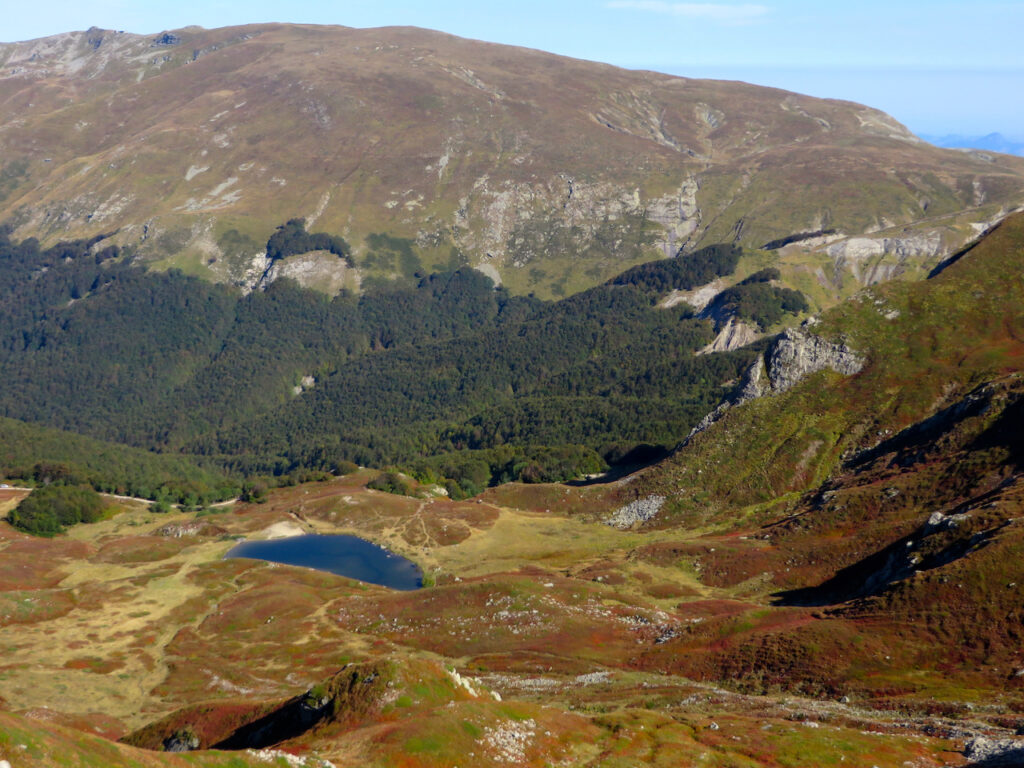Giada Centenaro, PhD student at the Doctoral School from the University of Lleida (UdL) and member of Agrotecnio-CERCA’s Forest Management research group, has carried out a study together with other international researchers which shows that there are three specimens of dwarf willow, Salix herbacea, that are at least 2,000 years old, and may be even be up to 7,000 years old. This finding makes them the oldest specimens of dwarf willow on record. Even by the most conservative estimate, these threes were already growing on Monte Prado in the Northern Apennines during the Roman Empire.
The paper was recently published in the American Journal of Botany and is base don the premise that clonal plants can reach large sizes and be very long-lived. Clonal plants reproduce asexually from a root, stem or other organ and are dominant in many ecosystems around the world. They are called like that because the new individuals they produce have exactly the same genes as their parent. Previous research has found that in cold areas, with difficult climatic conditions, plants are less likely to reproduce sexually and more likely to reproduce asexually, such as clonally, as a good alternative for surviving or even colonising new areas.
In the case of Salix herbacea, the dwarf willow, each clonal plant (or “genet”) can have a multitude of subunits (or “ramets”) that do not reflect the actual age of each genet. Thus, calculating the age of such plants is a challenge because it is not possible to simply count the rings of a ramet. The most common method is to calculate the ratio between the size of the plant (its radius) and the annual longitudinal growth rate. This is possible because the branches of the dwarf willow grow mostly horizontally, in all directions, resulting in rounded shapes that can reach up to 60 metres in diameter, according to the study by Centenaro et al.
This method of calculation is an indirect and linear estimate, which does not take into account factors that may have interfered with the development of the plant, such as it being broken by an animal, a stone falling on it or being affected by a dry season. Thus, the Agrotecnio researcher explains that “I hope that this publication will be decisive and will serve as a turning point to improve the method; considering the environment, the exact age of these willows could be known with more precision”.
World’s smallest tree sheds light on climate change adaptation

Wide spread of Salix herbacea specimens on Monte Prado. Photo by Alan Crivellaro
These small trees that have been studied are found on Monte Prado (2054 m), in the northern Apennines (Italy), but Salix herbacea, also known as the world’s smallest tree because it grows between one and six centimetres high, is a species that is widely distributed in various areas of eastern North America, northwest Asia and in Europe, more specifically in arctic and mountainous areas such as the Pyrenees of the Apennines, always at an altitude of over 1,500 metres above sea level. As it is a plant that only grows in arctic or mountainous areas, which are highly vulnerable to climate change, it is seriously threatened. According to 2019 data from the Pyrenean Climate Change Observatory, in recent decades the average temperature in the Pyrenees has risen 30% more than the world average.
The Iberian, Italic and Balkan peninsulas are home to some of the southernmost populations of many clonal plants, and among the most fragile are populations of arctic-alpine species such as Salix herbacea. The long age and enormous size of the specimens studied by Giada Centenaro and colleagues provide some clues as to how this vulnerable species has adapted to climate change to date, but the question of what will happen to it in a more extreme climate scenario remains unanswered.
More information:
- Centenaro, G., Petraglia, A., Carbognani, M., Piotti, A., Hudek, C., Büntgen, U. and Crivellaro, A. (2023) “The oldest known clones of Salix herbaceagrowing in the Northern Apennines, Italy are at least 2000 years old,” American Journal of Botany.
- Twitter thread summarizin the publication, by Giada Centenaro

